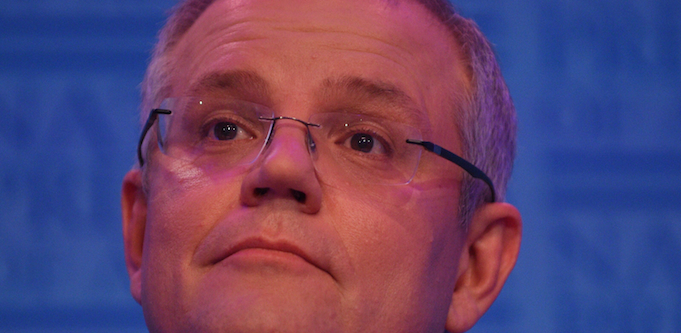
SMEs will have eyes on parliament next week, with reports the government will attempt to secure a win for part of its Ten Year Enterprise Tax Plan by locking in planned tax cuts for small businesses with annual turnover of less than $10 million.
Parliament is in its final two sitting weeks before the May budget, and after months of spruiking its support for the small end of town, the Coalition’s first part of its comprehensive tax plan will be debated in the Senate next week, reports Fairfax.
The total tax reform package, which was pledged in the 2016 federal budget, will lower the corporate tax rate for all businesses to 25% by 2026-27, at a cost of $48 billion.
The government has been championing the package since May last year, with the Prime Minister claiming in January it would end up making the average Australian worker $750 better off each year.
The first piece of the 10-year plan will lower the tax rate to 27.5% for small businesses with annual turnover of $10 million or less.
This is based on an increase in the “small business” turnover threshold of $2 million, which also forms the basis for other budget promises, including an extension of the $20,000 instant asset write-off scheme.
However, the government has faced opposition from Labor and the Greens on the prospect of cutting taxes for the big end of town, and The Australian reports the government may shelve the rest of the cuts after securing the changes for businesses up to the $10 million mark.
Labor and the Greens oppose the entire 10-year package, with the Labor Party refusing to budge on the $2 million turnover definition for small businesses. The government needs 39 votes to pass the legislation, which means the outcome will rest with Senate crossbenchers.
While Fairfax reports the government looks as though it has the numbers for the first part of package, it’s unclear whether the Nick Xenophon Team, which has three senate votes, would extend its support of the cuts out to companies beyond the $10 million turnover mark.
“Time to communicate, not lecture”
In his 2016 budget speech, Treasurer Scott Morrison placed small business at the centre of the government’s “jobs and growth” plan, claiming that “a tax on their businesses is a tax on their enterprise and the jobs they provide”.
Council of Small Business Australia chief executive Peter Strong supports the government’s plan and says those in Parliament should also back the change.
He says Labor’s refusal to move to a definition of small businesses as those with up to $10 million in turnover is confusing.
“I’m confused why they’re doing it. The $10 million threshold picks up so many small businesses, and it’s like they want us to stay small. At the moment, I’m not sure what Labor are doing with small business,” he says.
Strong says now is the time for all members of the business community to step up and articulate the benefits of lower tax rates for all in the community.
“The lower company tax rate is good for the economy,” he says.
“What we have to do is now to come up with a case study showing up why it works.”
While Strong says the tax cuts for SMEs could help with other challenges currently being discussed in the business community, including underemployment, stakeholders need to start communicating properly about how a lower tax rate would assist with these.
“The outcome of this is more investment as a result of the lower rate, it means more growth, more infrastructure. It means more part-time [workers] will become full-time,” Strong says.
“It’s up to people to communicate, not lecture, the advantages of the benefits for everybody, for community and workers, for everyone.”
Never miss a story: sign up to SmartCompany’s free daily newsletter and find our best stories on Twitter, Facebook, LinkedIn and Instagram.


COMMENTS
SmartCompany is committed to hosting lively discussions. Help us keep the conversation useful, interesting and welcoming. We aim to publish comments quickly in the interest of promoting robust conversation, but we’re a small team and we deploy filters to protect against legal risk. Occasionally your comment may be held up while it is being reviewed, but we’re working as fast as we can to keep the conversation rolling.
The SmartCompany comment section is members-only content. Please subscribe to leave a comment.
The SmartCompany comment section is members-only content. Please login to leave a comment.